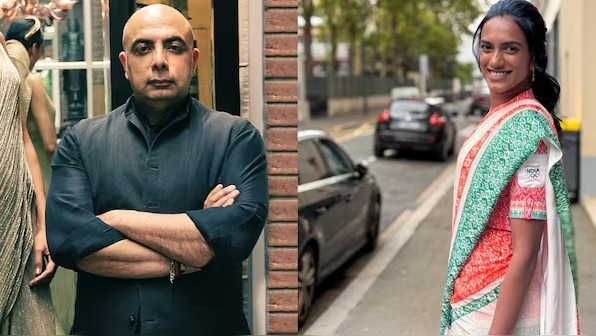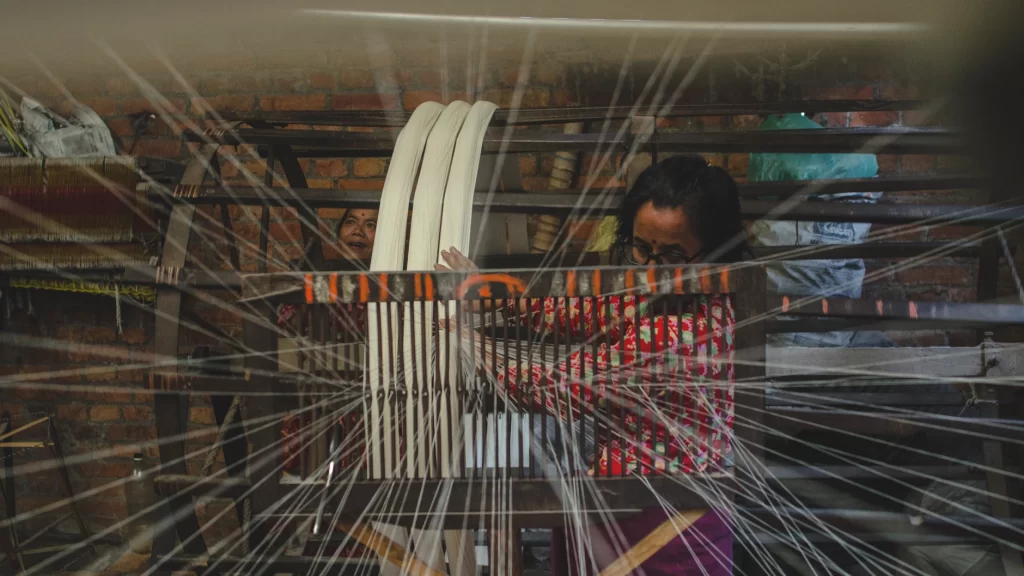The Olympics are on, in full swing. And the Indian squad’s Olympic uniforms have been breaking the internet—for all the wrong reasons. Designed by couturier Tarun Tahiliani, the uniforms of the 300-strong Team India, were unimpressive and poor ambassadors of our rich heritage. Not to mention, they rank unfortunately low on sustainability.
Tahiliani has defended his designs, manufactured by Tasva, a ‘premium affordable menswear’ label, launched by him in collaboration with the Aditya Birla Group. His defence includes the IOC guidelines, paucity of time as well as their weather- and occasion-appropriateness. But does that excuse the lacklustre silhouettes and the lack of innovation? Or the fact that these uniforms are pretty neither for the planet, nor for people—and for that matter, not even for those wearing them? But how problematic are these uniforms, exactly, and what could’ve been done differently?

They’re made of high-impact fabric.
Team India’s uniforms have been manufactured using viscose crepe. For the uninitiated, viscose is a category of rayon, a cellulose-based fabric, produced using a variety of chemical treatments. Rayon is neither completely natural, thanks to the high level of processing, nor synthetic, because of its plant origins. It is manufactured in a semi-closed loop system, leaving behind a considerable amount of waste byproduct. So while it is better than polyester, in that it doesn’t use fossil fuels and it will, eventually, biodegrade, it is neither low-impact nor clean.
Tahiliani has argued that cotton would’ve been impractical, given the time of year and the weather in Paris. However, the weather has clearly not played dampener to the Sri Lankan team who’ve worn uniforms made in silk. And isn’t the beauty of cotton that it is all-weather appropriate! The argument undermines the rich tapestry of textiles India has to offer, and turns blind in the face of India’s own weather conditions.

They undermine Indian craftsmanship.
One of the most popular and most valid criticisms of Team India’s Olympic uniform has been the Ikkat-style print. A craft that is popular in multiple styles, across India’s vast geography, has been reduced to a digital print. Tahiliani’s defence that the team had only 3 weeks to put together the uniform, and hence handweaving the Ikkat was implausible, begets the question why? For an event that we’ve all known has been 4 years coming, why were the uniforms made at the last minute?
The Mongolian team, which has been winning the internet with its uniform, had 3 months to get their uniforms together, after the originally chosen designers had dropped out. So, do we just not care? What was the ₹4,417 crores allocated to the textile sector for, if we’re not going to use it where it matters? Is National Handloom Day, which will ironically fall right in the middle of these Olympics, simply lip service? Or are we just looking at citizens doing their part, while government agencies encourage fast fashion—because that’s exactly what this is. We’ve taken a handicraft and made a cheap, industrial replica of it, cheating the artisans who make a living off creating it, and putting the money into the pockets of big business. Honestly, it’s giving Shell and their ‘carbon footprint’ greenwashing!

They’re going to add to the waste in landfills.
Uniforms, as a concept, are inherently terrible for the planet. They’re usually mass-produced, using high-impact materials, and have limited wearability, which, in this case, is exacerbated by the terrible design. With the Tasva logo plastered all over in a token reference to the tricolour, and created in cheap Ikkat imitation, it does not make for a personal style statement in any way. At least I, Dearest Gentle Reader, cannot fathom any of the athletes wearing this uniform again, unless they absolutely have to.
Would you wear it, if you didn’t have to? Tell us in the comments!







I thought it would be pure khadi which would have been a clear defence.
Aesthetically, there’s something disturbing…the balance of saffron n green..unimaginative, I would say. Except for the pocket on the jacket, there’s nothing new….what to say of the saree?! Somebody could have given the renowned designer a feedback. I am sorry for our participants, for us all and for the planet.